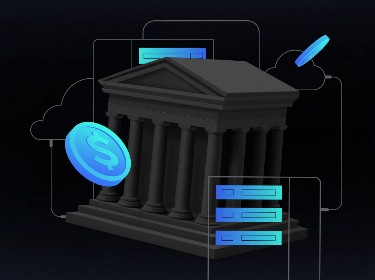While bread is the staff of life for most people, data is undeniably the staff of success for organizations, and knowing how to work with and implement data-driven decision making will help achieve staggering results across various business workflows and operations.
An increasing number of organizations are realizing the untapped potential of their data and enthusiastically integrating data-driven decision making into their business strategies. During this transition, they can shift away from relying on intuition and embrace rational data-driven methodologies, paving the way to overall success.
In this article, we will explore the importance of data-driven decision making in the business world, along with the benefits and challenges associated with its implementation. Our research and development company will also provide practical tips for organizations to effectively adopt this approach.
Let’s start!
What is data-driven decision-making?
Data-driven decision-making involves analyzing and interpreting an organization’s core data, metrics, and insights to make informed strategic business decisions.
This process encompasses several crucial steps, including:
Data collection. First, it is important for an organization to collect relevant data from various sources, such as databases, research studies, experiments, social media, transactional data, Internet of Things devices, and external data providers.
Data analysis. During this step, businesses will have to thoroughly examine the collected data to assess its quality and integrity. This involves identifying patterns and trends, conducting statistical hypothesis tests, and applying data segmentation and clustering techniques.
Data interpretation. Once the data analysis is complete, the next critical step involves personally interpreting the findings. This entails applying expertise and knowledge to make sense of the analyzed data and derive insights that are relevant to the specific business problem.
Get to know how to uncover actionable insights with the help of Tableau data analytics
Which technologies and tools are used in data-driven decision making?
Data-driven decision making relies on a variety of tools and technologies. The most vital ones include:
Database management systems and platforms for storing and managing large volumes of data and enabling efficient data retrieval and manipulation (e.g. MongoDB, MySQL, Microsoft SQL Server, and PostgreSQL);
Data warehousing technologies for organizing data from different sources into a centralized repository (e.g. Amazon Redshift, Google BigQuery, and IBM Db2 Warehouse);
Business intelligence tools for providing capabilities for data visualization and empowering users to explore and understand data easily (e.g. Tableau and Power BI);
Data mining tools for uncovering hidden patterns, correlations, and insights within large datasets via clustering, classification, and association rule mining (e.g. RapidMiner and KNIME);
Data analytics tools for gathering, processing, and analyzing data and extracting meaningful insights (e.g. Python and R).
See how PixelPlex delivered this data-driven BI service for providing actionable data on NFT collectibles as well as their provenance and ownership
What are the benefits of data-driven decision making?
![]()
Data-driven decision making offers a wide range of benefits, including enhanced accuracy and precision, improved business efficiency, better risk management, cost optimization, and increased customer satisfaction and personalization.
Enhanced accuracy and precision
Data-driven decision making enhances decision accuracy and precision by relying on factual information instead of guesswork and subjective opinions. As a result, it reduces the influence of human biases, enabling businesses to make more informed and accurate decisions and predictions, which leads to long-term positive impacts on the organization.
Improved business efficiency
Data-driven decision making optimizes business efficiency by enabling more efficient resource allocation, streamlining workflows, and eliminating bottlenecks. This leads to improved productivity, profitability, and overall performance while enhancing operational efficiency.
Better risk management
By incorporating data-driven decision-making in their processes, organizations can analyze historical trends, patterns, and anomalies. This deepens their understanding of risk assessment and management, empowering them to navigate the complexities of their business environment with confidence and precision.
Discover how data analytics is used in risk management
Cost optimization
Thanks to data-driven decision-making, businesses can swiftly identify bottlenecks and areas for improvement, allowing for prompt resolution of these issues. Consequently, organizations can optimize their processes, allocate resources more efficiently, identify cost-saving opportunities, and ultimately enhance their overall financial performance.
Greater customer satisfaction and personalization
By implementing business intelligence consulting, enterprises can gain valuable insights into customer preferences, behavior, trends, and needs. This knowledge empowers organizations to create personalized, tailored experiences and products, leading to improved customer satisfaction, loyalty, and satisfaction.
A 5-step guide to implementing data-driven decision making in your organization
The process of implementing data-driven decision-making is unique to each business, but there are some universal steps that you should follow.
![]()
Step 1. Define your business goals and objectives
To ensure a successful implementation of data-driven decision making, it is crucial to determine the specific goals your organization is striving to achieve through this approach. This will provide clarity and direction, ensuring that your data-driven initiatives align with the strategic objectives of your organization.
Step 2. Collect and analyze your data
In this step, you need to identify the sources from which you will collect relevant data and conduct comprehensive data analysis. This involves gathering data from internal sources such as sales, employee, and financial data, as well as CRM systems. Additionally, external sources like market research reports, web analytics, and social media platforms should be considered.
By collecting and analyzing this data, you will uncover valuable insights that drive informed decision-making and establish a robust foundation for your data-driven initiatives.
Step 3. Share and report the results of the analysis
After completing your data analysis, it is vital to share and report the results with relevant stakeholders. This process entails presenting the insights, findings, and recommendations derived from the analysis in a clear and concise manner.
Prepare comprehensive reports, dashboards, diagrams, or presentations that effectively communicate the key takeaways. Utilize data visualization techniques and tools to enhance the understanding of the findings and facilitate better comprehension among your key stakeholders.
Discover how Power BI can revolutionize your business's data visualization
Step 4. Use the gained insights for decision making
Utilize the gained insights to drive decision-making in strategic planning, resource allocation, marketing strategies, and operational processes. Carefully consider the findings and recommendations from data analysis and ensure their alignment with your business goals.
By leveraging these data insights, your organization can make accurate, proactive, and impactful decisions that will lead to business growth and success.
Step 5. Monitor results and continuously improve
After implementing the derived insights into your processes, it is essential to monitor the outcomes and performance resulting from the decisions made and assess their effectiveness. This monitoring is critical to maintain agility in a dynamic business environment and enable timely adaptations and strategic responses.
If necessary, make adjustments to optimize performance and drive further growth, ensuring continued success in an ever-evolving business landscape.
See how our big data consulting services can help your business get ahead
Aspects to consider when embracing data-driven decision making
While data-driven decision making offers numerous benefits, organizations should carefully consider certain aspects before fully embracing it. In the following section, we will provide tips to help ensure the success of your data-driven decision-making process.
Provide high-quality data
It is important to remember that data-driven decision making requires relevant, readable, and high-quality data to produce the most accurate and reliable insights. By ensuring that the data used is trustworthy, organizations can have confidence in the conclusions and recommendations derived from their data analysis.
Accurately interpret the gained insights
To derive meaningful and actionable business insights and strategies, accurate interpretation of analyzed data is vital. You should make sure that your team possesses the required skills, such as data analysis, statistical knowledge, and domain-specific expertise so that they can efficiently identify key trends, patterns, and insights from the data.
Ensure data security
Organizations must prioritize the implementation of robust and reliable data security measures to safeguard and responsibly manage customer data used for decision making purposes. This includes measures such as encryption, access controls, and regular security audits to mitigate the risk of data breaches and unauthorized access.
Establish a change-embracing culture
To fully leverage the benefits of data-driven decision-making, it is crucial to educate and train your team. By equipping your staff with the necessary knowledge and skills and conducting regular training, you can empower them to effectively utilize data insights and make informed decisions that will drive organizational growth and success.
Check out the detailed comparison between Power BI vs Tableau
Closing thoughts
With data-driven decision making, businesses can improve their efficiency, gain a competitive edge, and make informed choices that drive growth and deliver exceptional customer experiences.
Once you have decided to unlock the full potential of data-driven decision making, get in touch with our experienced data analytics company. We will provide the expertise and tools needed to navigate the complexities of data analysis and implementation.
Don’t let your valuable data go untapped. Contact us today to explore how our services can drive your organization’s success.




